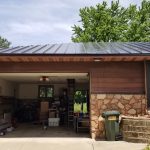Wind, solar, and storage could meet 90–100% of America’s electricity needs
By John Abraham for The Guardian
In order to combat climate change, we need to rapidly move from fossil fuel energy to clean, renewable energy. The two energy sources I am most interested in are wind and solar power; however, there are other sources that have great potential.
Some people doubt how much wind and solar can supply to a country’s electricity grid. This is a particularly challenging question to answer in part because both solar power and wind power fluctuate in both space and time. We all know solar panels work well during the day, when the sun shines – they don’t work so well at night. And wind turbines only send electrons when the wind is blowing.
Fortunately, these two sources of energy fluctuate in ways that complement each other. For instance, solar power generation is highest in the summer and lowest in the winter. Wind power is greatest in the spring and fall. Wind turbines work at night when solar panels are dormant. So, can these complementing variations help balance out the power that the two technologies can provide? 
This question was addressed in a very recent paper published in the journal Energy and Environmental Science. The author list included Dr. Ken Caldeira, who is extremely well known for his years of work in environmental science and energy.
The authors analyzed 36 years of hourly weather data (1980–2015) in the US. They calculated the available wind and solar power over this time period and also included the electrical demand in the US and its variation throughout the year.
With this information, the researchers considered two scenarios. In scenario 1, they imagined wind and solar installations that would be sufficient to supply 100% of the US electrical needs. In the second scenario, the installations would be over-designed; capable of providing 150% of the total U.S. electrical need. But the authors recognize that just because a solar panel or a wind turbine can provide all our energy, it doesn’t mean that will happen in reality. It goes back to the prior discussion that sometimes the wind just doesn’t blow, and sometimes the sun isn’t shining.





